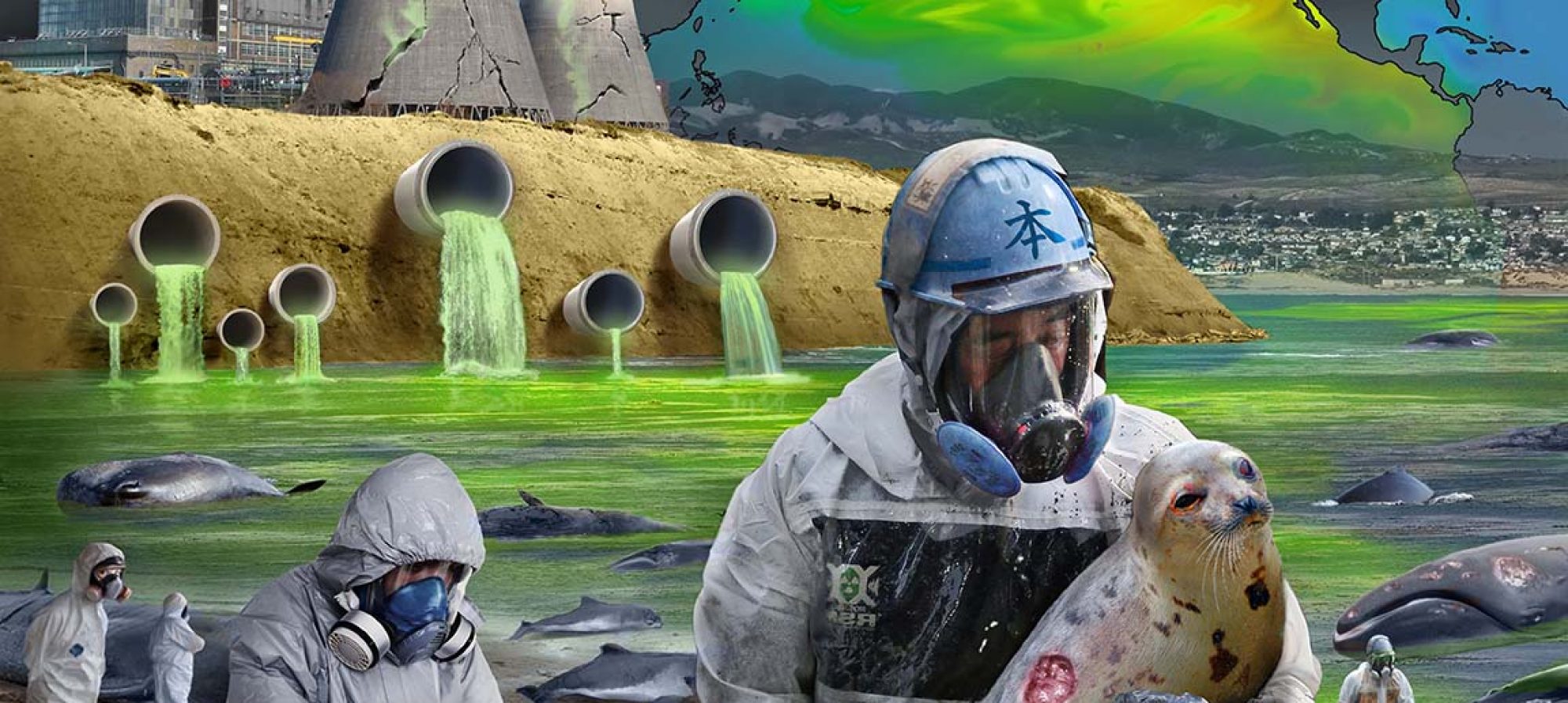A TEPCO (Tokyo Electric Power Company) anunciou semana passada que Leituras recentes nas proximidades dos reatores de Fukushima alcançaram impressionantes 530 sieverts por hora. A radiação de um local não contaminado fica em torno de 0.20 a 0.40 microsievierts por hora. Os níveis de radiação em Fukushima são os mais altos já registrados, mesmo robôs desenhados especialmente para lidar com a colossal quantidade de radiação enquanto fazem mensurações não podem permanecer na área por mais de duas horas sem sofrer colapso completo.
A maior medida de radiação registrada no reator 2 de Fukushima tinha sido de 73 sieverts. Especialistas afirmam que a radiação pode ser muito maior em áreas que a TEPCO não foi capaz de alcançar ainda. Alguns especialistas em energia nuclear chamaram os picos de radiação de “inimagináveis”
(Leia a reportagem em inglês)

The red-hot reading was taken robotically near an entry point to the space below the pressure vessel by analyzing electronic noise, caused by radioactivity, on video footage captured by the droid. TEPCO concedes the method has a 30 percent margin of error, but the findings indicate that damaged fuel, turned molten during the meltdowns, has made its way near the entry space. TEPCO said radiation, as of yet, is not escaping the structure.
Of concern, TEPCO also added that remote cameras have detected a two-meter hole in a grate underneath the pressure vessel, which the company also said appears to be warped.
To put 530 sieverts per hour in perspective, according to the U.S. Nuclear Regulatory Commission (NRC), the average American receives a dose of about 620 millirems of ionizing radiation in a whole year, from naturally occurring background, comic rays, radon gas and other sources. 620 millirems is equal to 0.0062 sievers — and remember, that’s in a whole year. The levels in Reactor 2 are presently so high, that entering the area for only one minute would mean almost certain death.
The Guardian reports, “A single dose of one sievert is enough to cause radiation sickness and nausea; 5 sieverts would kill half those exposed to it within a month, and a single dose of 10 sieverts would prove fatal within weeks.”
The Japan Times writes, “An official of the National Institute of Radiological Sciences said medical professionals have never considered dealing with this level of radiation in their work.”

IRID Fukushima Robot Camera
The astronomical readings bring major concerns to a cleanup operation already spiraling out of control — flying blindly into territory previously uncharted in the history of nuclear power. Late last year in an official announcement, the estimated cost of the cleanup for Fukushima Daiichi was doubled to a whopping $200 billion, for a project projected to take as long as a century to complete.
To top it off, 530 sieverts per hour might not be the worst cleanup workers have to worry about. TEPCO also stated that surface-level radiation readings from parts inside the plant’s pressure vessels can reach “several thousand sieverts per hour,” compounding what are already seemingly unsurmountable tasks in the decommissioning process.

Fukushima Reactor 2 Pressure Vessel
Esteemed nuclear expert, engineer, and former reactor operator Arnie Gundersen told EnviroNews World News in an email that the position of Fairewinds, his educational non-profit, is that radiation levels are presently way to high to remove the melted fuel, and that the reactors should be entombed, like was done with Chernobyl’s sarcophagus, for at least a century before attempting dismantlement. “[These readings do] make dismantling the facility almost impossible for 100 or more years, as the exposure to workers would be too significant,” Gundersen said.
To many environmentalists, of even greater concern than the levels themselves, is the fact the melted cores breeched containment and are contaminating groundwater — water that is continuously seeping out to sea, taking myriad radioactive isotopes with it as it poisons aquatic life and the food chain.
“There are no easy solutions, since groundwater is in direct contact with the nuclear corium (melted fuel) at Fukushima,” Gundersen said. “The important issue for the Japanese (and the world) to accomplish is to stop the groundwater from entering the damaged containment, and thus leaking out into the Pacific; to trap this radiation inside the damaged containment as happened at Chernobyl. Stopping the groundwater from entering, sealing in the radiation, and waiting 100-plus years to dismantle the reactors has always been the Fairewinds recommendation.”
In other developments of TEPCO’s Reactor 2 vessel survey: The company announced on January 30, 2017, that in another probe, deployed with a camera on a telescopic arm, a black blob was discovered on the grating directly underneath the pressure vessel. TEPCO suspects this could be part of the melted fuel core. If that’s the case, and the deposits are indeed melted fuel, this would represent the first time since the melt-throughs occurred nearly six years ago that TEPCO has located any fragments of the runaway cores.
It is surmised that all three reactor cores at Fukushima melted through their pressure vessels, and either pooled at the bottom of their containment vessels, or melted through those as well. The actual state of the melted fuel is unknown because radiation levels are too high to survey it. Further analysis of the structure revealed the aforementioned two-meter hole in the grating.
Fonte: http://www.environews.tv/world-news/alert-new-radiation-readings-fukushima-reactor-2-unimaginable-lethal-1-min/
